Riding a bike can be fun and exciting, no matter your age. Plus, it’s a cost-effective way to commute while squeezing more exercise into your schedule. But, just like driving a car, cycling requires a good understanding of traffic laws and regulations.
Sometimes, even small mistakes, like using the wrong hand signal or missing a stop sign, can lead to an accident. For this reason, California bicycle laws apply to all bike riders, including children and teens. Their role is to ensure your safety and the safety of those around you.
Bicyclists have the same rights and responsibilities as car drivers, according to the California Vehicle Code. So, before you hit the road, make sure you know what you should (and shouldn’t) do.
California Bicycle Laws Are in Place for Your Safety
Whether you’re driving or cycling, you share the road with others. Therefore, it’s crucial to follow the rules and obey traffic signals.
Bicycle riders are particularly vulnerable in traffic and may experience serious injuries in the event of an accident. Just like pedestrians, they’re often overlooked by car drivers, which can increase their risk of a crash.
About 2.2% of all traffic fatalities that took place in 2021 involved cyclists. During that year, more than 41,615 bike riders suffered injuries and 966 lost their lives in motor-vehicle traffic crashes.
Most fatalities involving this group occur at non-interSection locations. Bad weather, poorly maintained roads, and the absence of separate bike lanes all play a role. Additionally, cyclists—especially children and teens—often have poor knowledge of road safety rules.
Each year, more than 100 cyclists in California lose their lives, and over 10,000 are injured in collisions. Given these numbers, it’s easy to understand why the rules of the road are in place. Yet, drivers and bike riders alike flout regulations, putting everyone’s lives at risk.
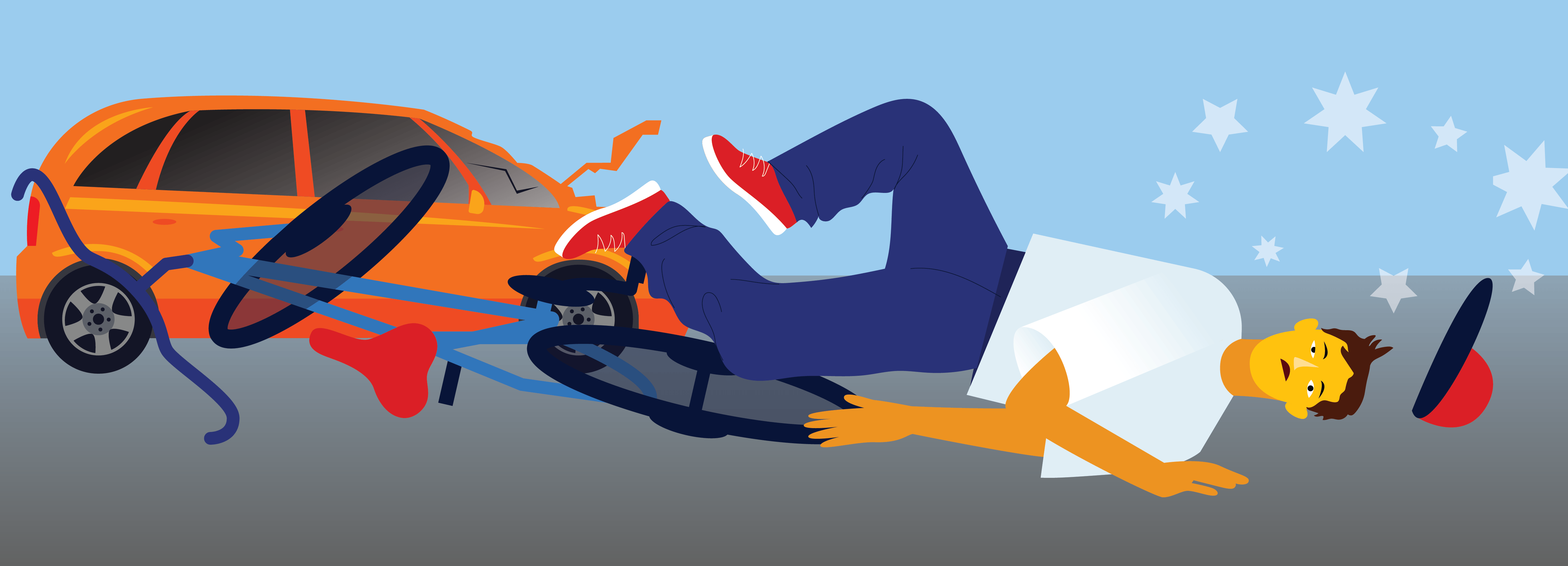
California bicycle laws are meant to improve road safety and prevent fatalities.
For example, Section 21212 of the California Vehicle Code requires all cyclists under 18 years old to wear helmets. These accessories can lower the risk of head and brain injuries by up to 85% and the risk of severe facial injuries by 65%.
Traffic school can help you keep a clean driving record, prevent insurance increases, and more!
California’s Commitment to Safe Cycling
Over the last few years, the State of California has implemented several measures to promote cycling and make this activity safer.
In 2019, it launched a campaign called Promoting Safe Bicycle Travel Opportunities for Bicycle Tourism and Economic Development. The project revolves around a series of measures meant to enhance cyclist safety on recreational routes and increase bicycle tourism. These include infrastructure improvements, organized group bicycle rides, competitive events, and more.
In 2023, California passed the OmniBike Bill and several other laws meant to improve road safety for cyclists and pedestrians.
For example, the OmniBike Bill (AB-1909) requires drivers to change lanes when passing cyclists whenever it’s safe to do so. It also allows riders to cross on pedestrian walk signs and prohibits bicycle licenses, among other measures.
During the same year, the State’s Office of Traffic Safety, in partnership with Caltrans, launched “Go Safely, California,” an education program for all traffic participants. This project is tied to the OmniBike Bill and aims to increase awareness of road safety.
Such initiatives can make a difference, but you must do your part to stay safe on the road. With that in mind, let’s take a closer look at the laws and regulations concerning cyclists.
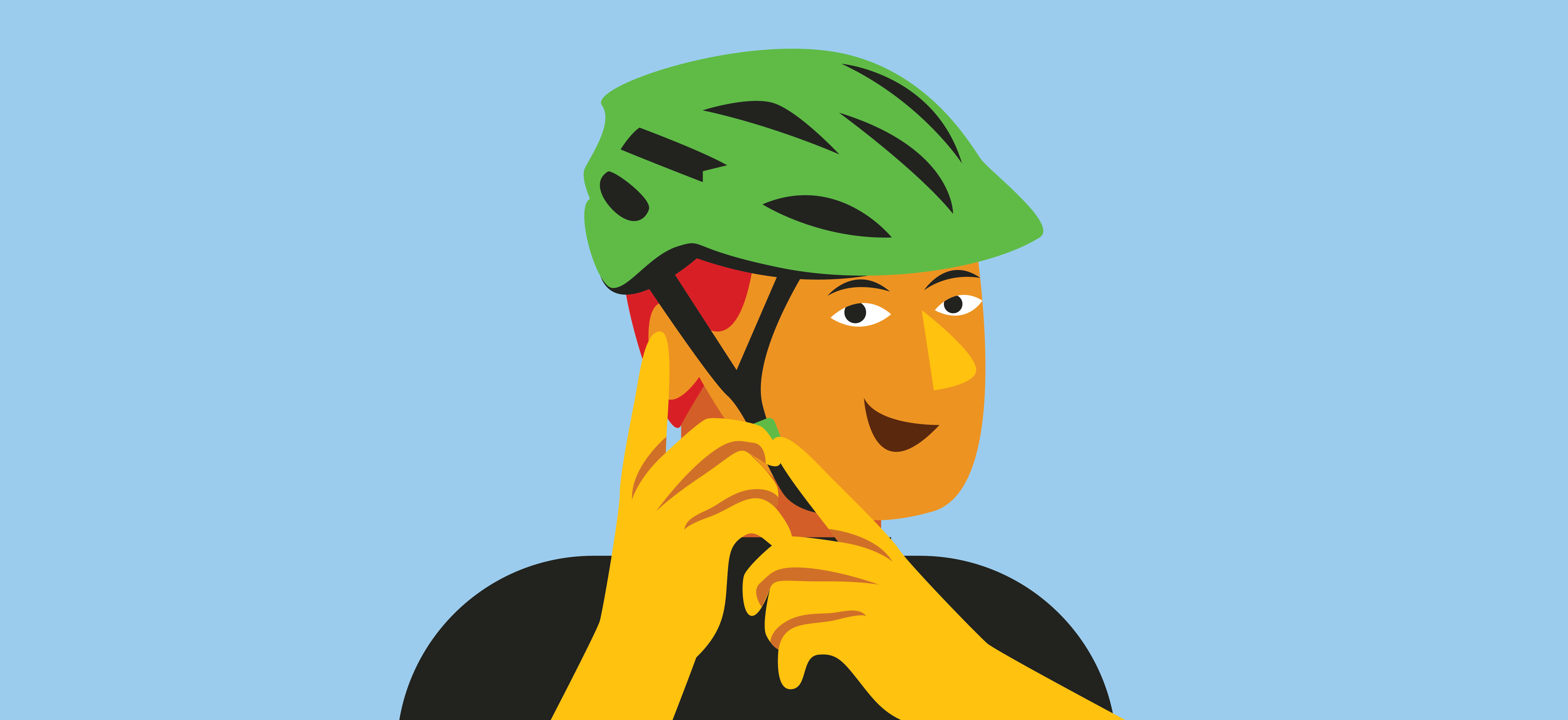
Bicycle Equipment Requirements
Riding a bike comes with certain responsibilities, such as the obligation to have adequate lights.
The following requirements apply to all bicycles on public roads.
Lights and Reflectors
If you’re riding a bike at night, make sure it has a front white lamp and a rear red rear light or reflector—plus pedal and side reflectors.
Under California Vehicle Code 21201(d), the front white light should be visible from 300 feet, while the rear red light should be visible from 500 feet. The pedal reflectors should be visible from 200 feet.
These lights allow car drivers and other traffic participants to see you from a distance. You may also wear a reflective vest or similar accessories to increase your visibility on the road further.
Bells or Audible Devices
Bike bells allow you to warn pedestrians that you’re approaching, which may reduce the risk of a collision.
If, say, you see a child walking down the street, you can ring the bell to alert him of your presence. Otherwise, he might jump out in front of your bike.
California law doesn’t specifically require the use of bicycle bells, but they can serve as a safety measure. Bicycle horns are allowed, too.
Note that you may not use a siren or whistle in California or any other state, for that matter. These accessories increase noise pollution and may confuse motorists or pedestrians, who could mistake the sound for an emergency vehicle.
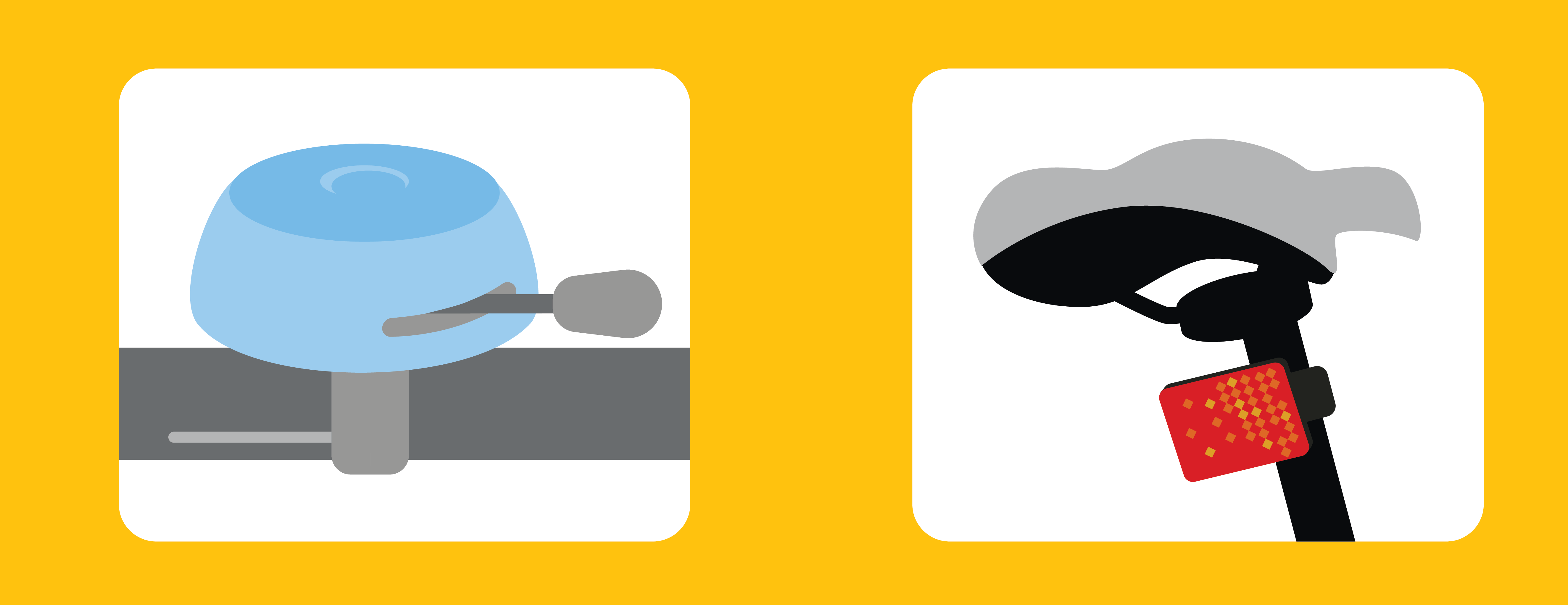
Brakes
The brake on your bike must allow you to make one of the wheels skid while riding on dry, flat, and clean roads. It should be powerful enough to stop the wheel from spinning in a timely manner.
Helmets
As mentioned earlier, bike riders under 18 must wear a helmet while on the road.
The helmet should fit properly and have straps to hold it in place. It must also meet the safety standards of the United States Consumer Product Safety Commission (CPSC) or the American Society for Testing and Materials (ASTM).
In California, the fine for not wearing a helmet is $25, but it’s simply not worth the risk. According to a 2017 study, bike riders who wear helmets are 51% less likely to sustain traumatic brain injuries and 44% less likely to die in the event of an accident.
If you’re under 18 and get caught riding your bike without a helmet, then your parents will pay the fine. However, the charge can be dismissed if you testify under oath that you’ve never done this before.
Our advice is to wear a helmet every time you ride, no matter your age. This safety measure could save your life.
Rules of the Road
Road safety is a shared responsibility, and cyclists have the same obligations as bikers, car drivers, and other traffic participants.

That said, here are five rules to keep in mind when riding your bike on public roads.
- Stay to the right side of the road: Cyclists should ride as far to the right as possible so that cars and other faster-moving vehicles can pass safely. However, there are exceptions to this rule:
- Passing: Generally, moving to the left side of the road is okay when overtaking other vehicles.
- Preparing for a left turn: Move toward the center of your lane before making a left turn.
- Avoiding hazards: Ride your bike toward the center or left side of the road if there are obstacles on the right side.
- Riding on narrow roads: If the road is too narrow to share it with other vehicles safely, you might need to move toward the center.
- When preparing for a right turn: If you’re approaching an area where a right turn is allowed, you can ride toward the left of the lane to prepare for the turn.
- Use bike lanes whenever possible: Bike lanes create a barrier between cyclists and other traffic participants, increasing road safety. They also enable bike riders to carry on at a steady speed, which can improve traffic flow.
- Yield to pedestrians: Slow down ahead of time to allow pedestrians to cross safely. If someone has already stepped onto the crosswalk, stop and let them pass.
- Check the local laws concerning freeways: According to Section 21960 of the California Vehicle Code, local authorities may forbid cyclists from riding on freeways and expressways. If access is allowed, then you should see a sign that says so. More often than not, bike riders cannot use these roads because they are designed for higher-speed motorized traffic.
- Signal your intentions: Use hand signals to let the other road users know what you plan to do next.
For example, you’ll straighten your right arm when turning right and your left arm when turning left. Extend your left arm and rotate your forearm downward if you plan to slow down or stop. Make these signals around 100 feet before turning, and hold them for three seconds or so.
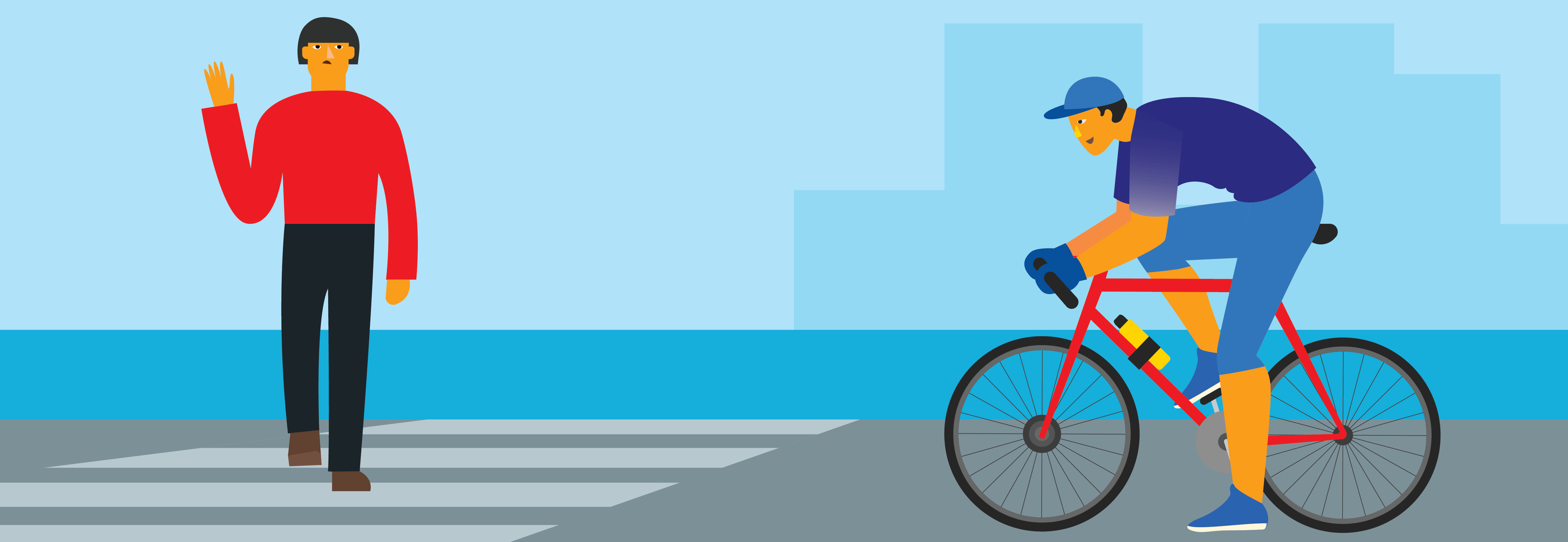
Sidewalk Riding
Some cyclists don’t feel comfortable riding in traffic—and for good reason. These road users are often overlooked by cars, which can lead to fatal injuries.
One option is to ride your bike on the sidewalk. In California, this practice is legal in some, but not all, cities and counties.
For example, San Francisco allows it only for cyclists under 13 years old. But if you live in Sacramento, you can ride on the sidewalk in designated areas. Under these circumstances, it’s your responsibility to check your city’s laws.
If you’re allowed to ride on sidewalks, give priority to pedestrians and ring the bell when overtaking them. Slow down before approaching them—and be prepared to stop. Apart from that, avoid crowded areas whenever possible and approach all turns with caution.
Electric Bicycles and E-Scooters
These vehicles are subject to slightly different rules than bicycles in California and most other states.
Let’s start with electric bikes, which include any bicycle with an electric motor of 750 watts or less and fully operable pedals.
California law categorizes e-bikes into three classes:
- Class 1, or pedelecs: This category includes pedal-assisted e-bikes that can reach up to 20 miles per hour (mph).
- Class 2: These vehicles have the same motor power as pedelecs but come with throttle assist. Therefore, you can push or twist the throttle instead of pedaling.
- Class 3: This type of e-bike can reach up to 28 mph and doesn’t have throttle assist.
People under 16 years old are not allowed to operate class 3 electric bikes. Additionally, all riders under 18 must wear a helmet, regardless of the type of bike used.
| Electric Bikes | Electric Scooters | |
| Age requirements | 16+ for Class 3 e-bikes, any age for Class 1 and Class 2 e-bikes | 16+ |
| Driver’s license | No | Yes |
| Speed limit | 28 mph | 15 mph |
| Helmet requirements | Yes, for all riders under 18 | Yes, for all riders under 18 |
Electric scooters, on the other hand, include any two-wheeled vehicle with an electric motor, handlebars, and either a floorboard or a seat and footrests.
Unlike electric bikes, e-scooters require a valid driver’s license and, consequently, liability insurance. You can ride one starting at age 16 with a learner’s permit or wait until you’re 18 to apply for a driver’s license in any class.
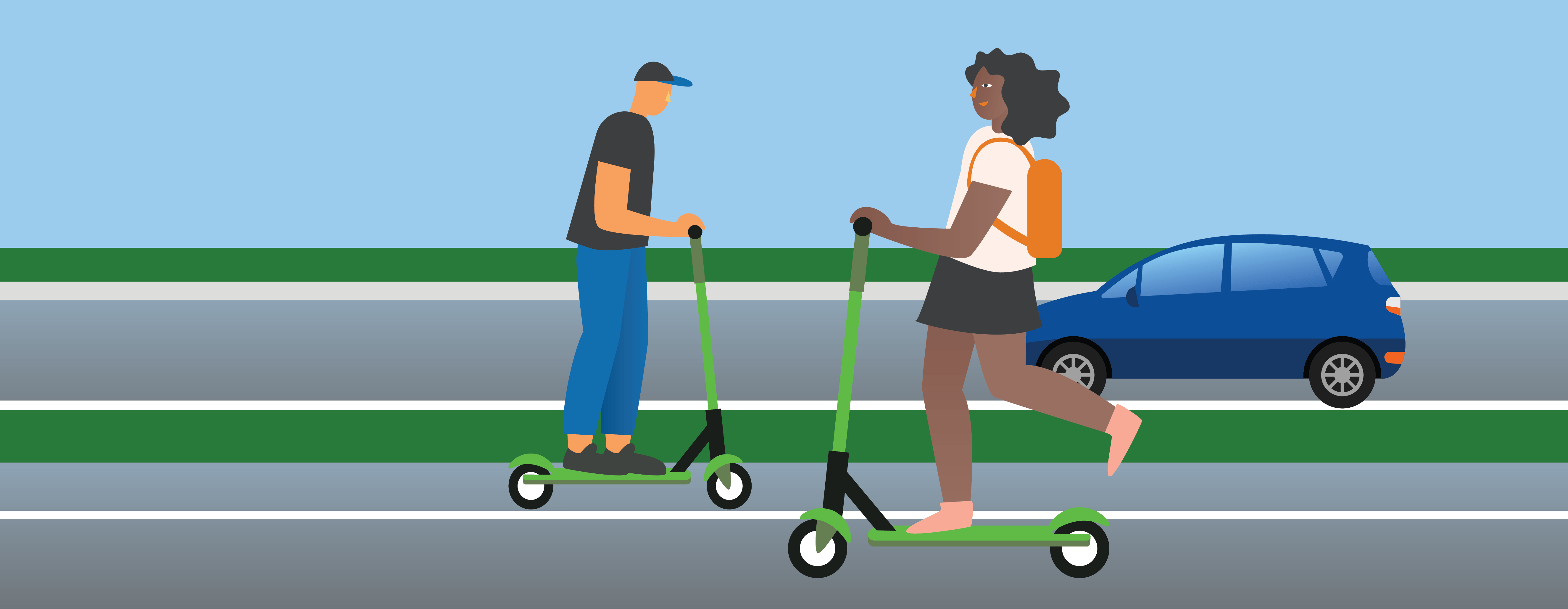
Rules of the Road for E-Bikes and E-Scooters
In California, it’s legal to ride an e-bike in bicycle lanes. However, some cities and counties only allow Class 3 e-bikes on motorized trails.
The same goes for electric scooters, which may or may not be allowed on bicycle lanes, depending on the local laws.
Generally, you can ride an electric bike on any sidewalk where regular bikes are allowed. E-scooters, on the other hand, cannot be used on sidewalks.
Last but not least, neither type of vehicle can be ridden on highways or expressways with speed limits over 25 mph.
Parking Your Bike
Most bikes are small enough to fit just about anywhere, but they can still impede pedestrian traffic or block access to buildings and other areas.
Given these aspects, you cannot park your bike on sidewalks, on handicapped access ramps, or in front of building entrances. It’s also forbidden to leave it lying on its side on sidewalks.
Most cities and counties in California have designated spaces where people can park their bicycles.
For example, L.A. residents and visitors can opt for bike racks or corrals for short-term parking. Those who need a place to store their bikes for longer periods may use a locker, bike room, bike cage, or bicycle transit station.
These facilities are usually equipped with lockers, posts, security cameras, or other safety features. However, it may still be worth investing in a high-quality lock for your peace of mind.
- Use two bicycle locks so you can secure the frame and both wheels.
- Leave your bike in well-lit locations whenever possible.
- Remove any lights, pumps, GPS devices, and other accessories before parking your bike.
You’ll also want to register your bicycle with Bike Index or a similar organization. This can increase your chances of recovering the bike if it gets stolen.
Biking Safety and Etiquette
The unwritten rules of cycling are meant to keep you and others safe on the road and ensure a smooth traffic flow.
For instance, it’s recommended to ride predictably. Common mistakes, such as weaving back and forth between lanes or making sudden turns, can lead to accidents.
As a rule of thumb, ride your bike in a straight line and make your intentions known ahead of time. Leave at least three feet between yourself and other traffic participants if possible.
Whether you’re riding solo or in a group, you should also follow these tips:
- Be aware of your surroundings: Watch out for ice, loose gravel, manhole covers, potholes, and other hazards on the road. Remember to look over your shoulder, especially when turning left or right, to check your blind spots.
- Minimize distractions: Refrain from talking on the phone or listening to music while riding your bike. You need all your senses to stay alert in traffic. If you must use your phone, wear earbuds and pay extra attention to your surroundings.
- Double-check your equipment: Take the time to inspect your seat, tires, brakes, and lights before hitting the road. Consider buying a basic repair kit—and bring it with you on every ride.
- Get personal: There are situations where drivers may not see you. To stay safe, make eye contact with them when turning left or right, as well as at intersections.
- Always pass on the left: Follow this rule whenever you’re approaching another cyclist, pedestrian, or motorist. If you overtake a car on the right and the driver doesn’t see you, they could crash into you when switching lanes or turning right.
- Use common courtesy: Sometimes you find yourself riding with other cyclists, especially in crowded areas. When that happens, slow down and let them pass. If you want to join them, ask about it beforehand.
Things are a bit more complicated for those riding in a group. As a general rule, you should hold your line and stick with the group from start to finish.
Depending on the traffic conditions, you should ride in a single file or no more than two abreast. Always follow the leader’s instructions, signal your turns and stops, and maintain a safe distance between your bike and other riders.
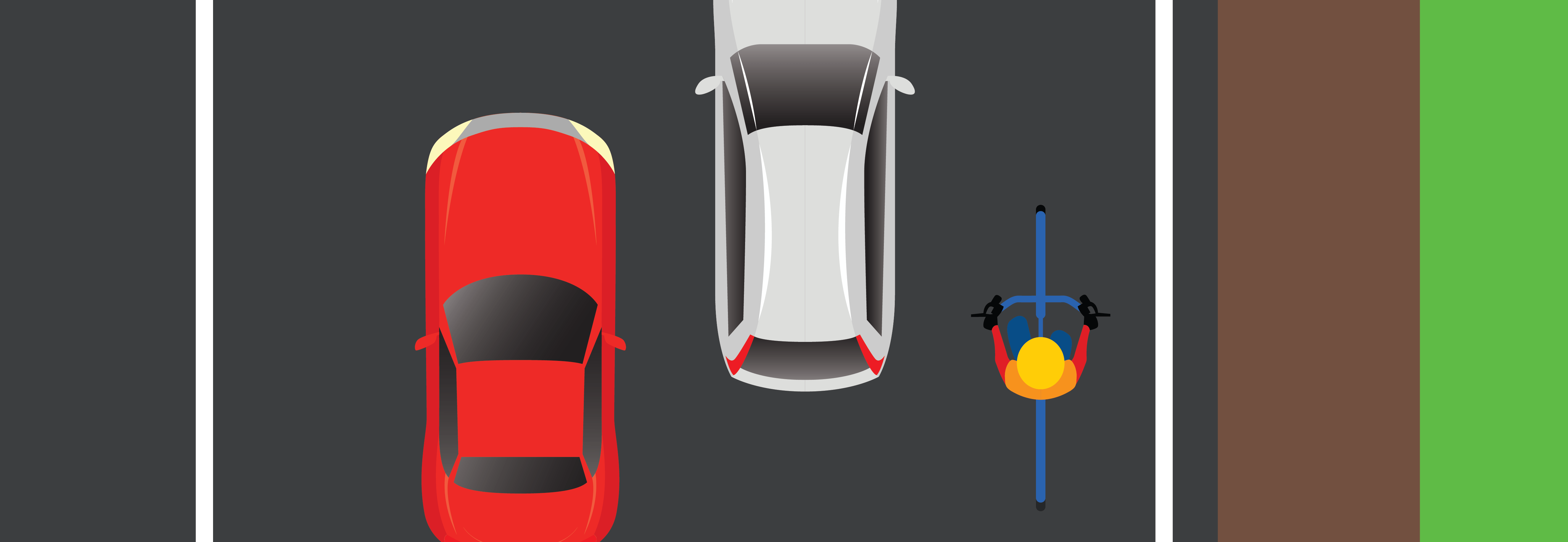
When riding two-abreast, try to maintain the same pace as the person next to you. Avoid half-wheeling, swerving, or overlapping wheels throughout the ride.
Legal Responsibilities and Rights
Bicycle accidents are common, and knowing what to do is important if that happens to you.
First of all, stay where you are, especially if the accident resulted in injuries or property damage. Check yourself and others involved in the accident for injuries, and call 911 if necessary.
Don’t attempt to move the victim in the event of a collision with a pedestrian. He or she may have spinal cord injuries, and moving them to the sidewalk could make things worse.
Next, take pictures of your injuries or the injuries you caused to others and the scene of the accident. If you have a helmet cam, save the footage so you can show it to the police.
After that, exchange your contact information with the parties involved and take pictures of their IDs. Get the driver’s vehicle registration number if you are hit by a car. Ask any witnesses for their contact details.
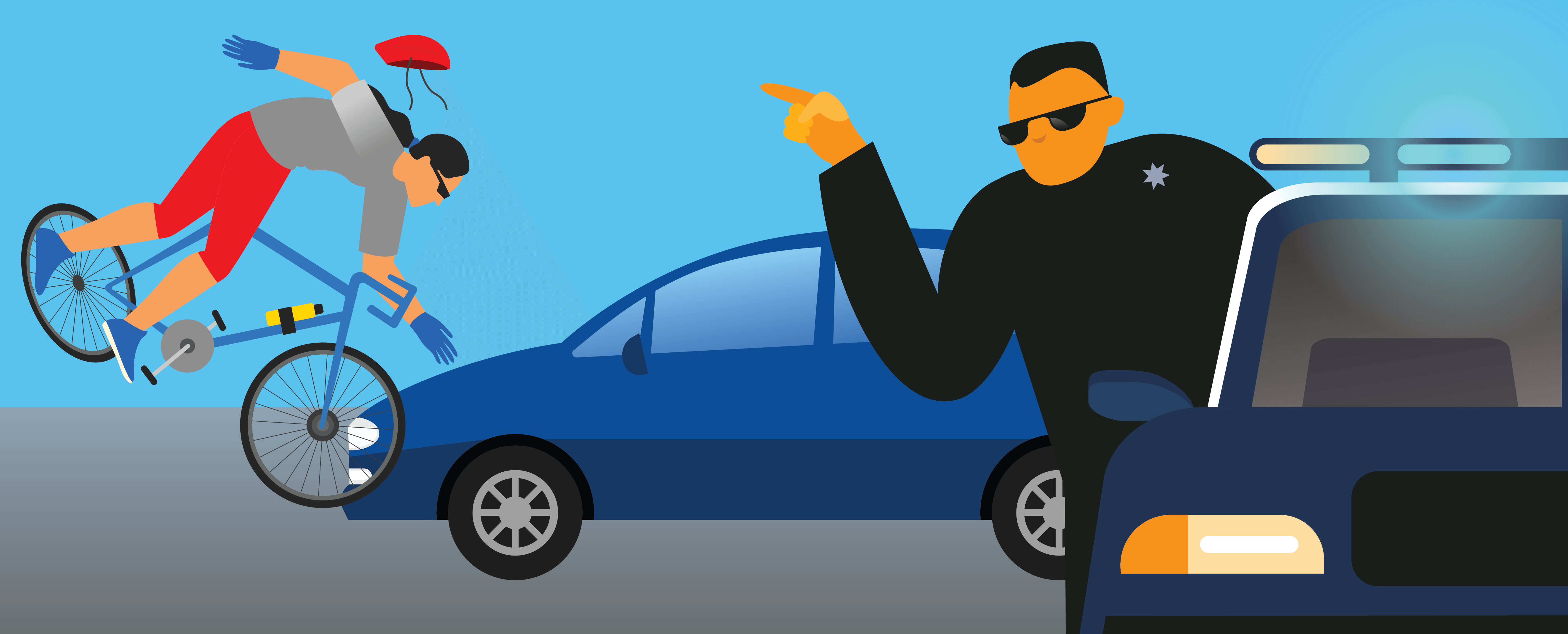
All states, including California, require cyclists to call the police in the following situations:
- After hitting a pedestrian
- Following a collision with another cyclist
- If they are hit by a car and then injure another road user because of it
If you’ve been hit by a car, then it’s the driver’s responsibility to report the collision. However, he may be in shock or leave the scene of the accident, in which case you should call the police. Remember to seek medical care as soon as possible, even if you don’t have visible injuries.
The police will analyze the evidence to determine who is at fault. If you are found responsible, you may have to pay for any damages resulting from the accident. In California, one or both parties may be held liable, depending on their degree of fault.
In some cases, you may be able to pursue a liability claim against the city council (e.g., when an accident is due to poor road conditions), the bicycle manufacturer (e.g., the accident occurred due to a manufacturing defect), or the motorist who hit your bike.
The Consequences of Bicycle Traffic Violations
According to Section 21200(a) of the California Vehicle Code, bike riders are subject to the same traffic laws as motorists. Therefore, cyclists can get fined for exceeding the speed limit, ignoring stop signs, disregarding traffic signals, and so on.
For example, you are not allowed to ride your bike under the influence of alcohol, drugs, or both. The fine for violating this rule is $250.
Some regulations may vary from one city to another, but the rules of the road remain the same.
At the end of the day, complying with the law isn’t just about avoiding fines. Given the rising number of accidents, it’s in your best interest to follow the rules. Cyclists are more vulnerable to road traffic injuries than car drivers, and sometimes even a small mistake can be fatal.
